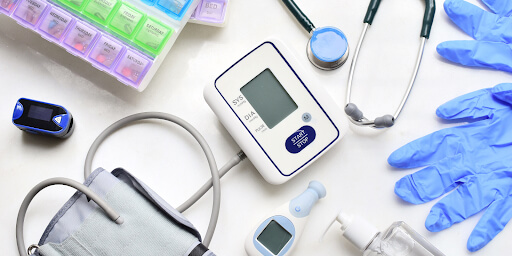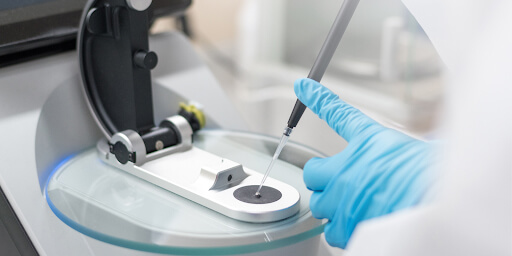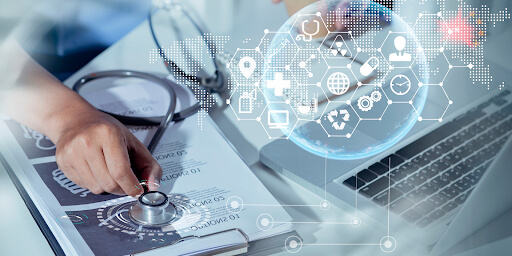 1-800-805-5783
1-800-805-5783 
Medical devices play a crucial role in patient care, encompassing a wide range of technologies that contribute to diagnosing, treating, and monitoring diseases and injuries. These devices, often powered by electricity, require adherence to strict safety standards and procedures to ensure patient and healthcare provider safety. This comprehensive guide will explore the various aspects of medical devices, including their definition, types, classifications, and safety regulations.
Medical devices are appliances, instruments, materials, or articles used for medical purposes. They can diagnose, prevent, monitor, treat, or alleviate diseases or injuries. These devices may also investigate, replace, or modify physiological processes in the human body. Medical devices encompass various technologies, including software essential for their intended purpose.
Medical devices’ primary objective is to improve patient care and enhance healthcare outcomes. They can be standalone devices or used in combination with other equipment. While some medical devices achieve their intended action through pharmacological, immunological, or metabolic means, others may assist in their function. To ensure the safety and efficacy of medical devices, universal standards and norms have been established, and compliance with these standards is crucial.
Medical devices can be classified into several categories based on their intended use and mode of operation. Here are the main types of medical devices:
Active medical devices rely on electrical energy or another power source, excluding the human body or gravity. These devices play an active role in diagnosing, treating, or monitoring diseases or injuries. Examples of active medical devices include pacemakers, infusion pumps, and defibrillators.

Active implantable medical devices are intended to be entirely or partially inserted into the human body, either surgically or medically. After the procedure, these devices remain in the body and require a power source. Examples of active implantable medical devices include implantable defibrillators and neurostimulators.
In vitro diagnostic medical devices are used to examine specimens derived from the human body. These devices provide information about physiological or pathological states, congenital abnormalities, safety and compatibility with potential recipients, or the monitoring of therapeutic measures. Examples of in vitro diagnostic medical devices include pregnancy test kits and blood glucose meters.
Medical devices are classified into different categories based on their risk level. The classification determines the regulatory requirements and scrutiny for their approval and marketing. Here are the four main classes of medical devices:
Class I medical devices pose the lowest risk to patients and healthcare providers. These devices are typically simple in design and do not require invasive procedures. Examples of Class I medical devices include tongue depressors and thermometers.
Class II medical devices pose a slightly higher risk than Class I devices. They may require a more complex design and involve minimally invasive procedures. Examples of Class II medical devices include hypodermic needles and powered wheelchairs.
Class III medical devices pose a significant risk to patients and may require invasive procedures. These devices are often complex in design and are used in critical medical interventions. Examples of Class III medical devices include implantable defibrillators and heart valves.
Class IV medical devices are the highest-risk category, reserved for devices with potentially life-threatening consequences. These devices undergo rigorous scrutiny and must demonstrate exceptional safety and efficacy. Examples of Class IV medical devices include advanced surgical implants and artificial organs.
Safety is a paramount concern in the development and use of medical devices. Several international standards and regulations have been established to ensure these devices’ safety and efficacy. Compliance with these standards is essential for the approval and marketing of medical devices. Here are some of the critical safety standards and regulations:
ISO 13485 is an internationally recognized standard that specifies the requirements for a quality management system for medical device manufacturers. Compliance with this standard ensures that manufacturers consistently meet customer and regulatory requirements, focusing on the safety and effectiveness of their medical devices.
IEC 60601 is a series of technical standards that outline the safety and performance requirements for medical electrical equipment. These standards cover various aspects, including electrical safety, electromagnetic compatibility, and protecting patients and healthcare providers from potential hazards associated with medical devices.
The Food and Drug Administration (FDA) regulates medical devices in the United States. Depending on their risk classification, manufacturers must comply with the FDA’s premarket notification or approval process. The FDA ensures that medical devices meet safety and efficacy standards before being marketed and sold in the United States.
In the European Union, medical devices must bear the CE marking, indicating compliance with the essential requirements of the European Medical Device Directives. The CE marking demonstrates that a medical device meets the necessary safety, health, and environmental protection standards for its intended use.
The field of medical device design is constantly evolving, driven by advances in technology and the need for improved patient care. Here are some noteworthy advancements in medical device design:
The Internet of Medical Things (IoMT) refers to the network of medical devices and applications connected to healthcare information systems. IoMT enables remote monitoring, real-time data analysis, and enhanced communication between healthcare providers and patients. This technology has the potential to revolutionize healthcare delivery and improve patient outcomes.
Wearable medical devices like smartwatches and fitness trackers have recently gained popularity. These devices can monitor vital signs and physical activity and provide real-time health data to users. Wearable medical devices offer new convenience and accessibility in healthcare monitoring.
Artificial intelligence (AI) and machine learning (ML) technologies are being integrated into medical devices to enhance diagnostic accuracy, predict treatment outcomes, and improve patient care. AI-powered medical devices can analyze large amounts of data and provide valuable insights to healthcare professionals, leading to more personalized and effective treatments.
3D printing has revolutionized the manufacturing of medical devices, allowing for greater customization and faster prototyping. This technology enables the production of complex structures and patient-specific implants, enhancing the precision and efficacy of medical interventions.
Testing is vital in ensuring medical device safety, efficacy, and compliance. Before a medical device can be approved, it must undergo rigorous testing to evaluate its performance, reliability, and security. Testing protocols may include mechanical, electrical, biocompatibility, and usability testing. These tests help identify potential risks, ensure proper functioning, and validate the device’s compliance with regulatory standards.
The medical device industry is continually evolving, driven by emerging technologies that have the potential to revolutionize healthcare. Here are some of the emerging technologies in the medical device industry:
Nanotechnology involves manipulating materials at the nanoscale to create new functionalities and applications. In the medical device industry, nanotechnology offers possibilities for targeted drug delivery, improved imaging techniques, and advanced diagnostics.

Robotic-assisted surgery and minimally invasive techniques transform surgical procedures, enabling greater precision, reduced invasiveness, and faster recovery times. Robotic surgical systems provide surgeons with enhanced control and visualization, improving patient outcomes.
Telemedicine and remote monitoring technologies allow healthcare providers to deliver care remotely, improving access to healthcare services and reducing the need for in-person visits. These technologies enable real-time communication between patients and healthcare professionals, facilitating timely interventions and proactive management of health conditions.
Bioprinting involves fabricating three-dimensional structures using living cells and biomaterials. This technology holds immense potential for tissue engineering and organ transplantation. Bioprinted organs and tissues can address the shortage of donor organs and offer personalized solutions for needy patients.
Medical devices encompass a vast array of technologies and products. Here are some examples of medical devices across different categories:
The medical device industry faces several challenges, including regulatory complexities, cost pressures, and the need for continuous innovation. However, the future of medical devices holds great promise. Here are some key trends and challenges in the medical device industry:

Advancements in genomics and molecular diagnostics are paving the way for personalized medicine. Medical devices will be crucial in delivering customized treatments and therapies tailored to individual patient’s genetic makeup and health profiles.
Cybersecurity and data privacy are critical concerns as medical devices become increasingly connected and reliant on digital systems. Ensuring the security of patient data and protecting medical devices from cyber threats will be paramount in the future.
Harmonizing regulatory frameworks and promoting global collaboration in evaluating and approving medical devices will streamline market access and facilitate innovation. International cooperation can help ensure the safety and effectiveness of medical devices while promoting access to new technologies.
Advancements in sensing and monitoring technologies, such as biosensors and wearable devices, will enable real-time health monitoring and early detection of diseases. These technologies will empower individuals to take proactive steps toward managing their health.
Medical devices are vital in modern healthcare, enabling better diagnosis, treatment, and monitoring of diseases and injuries. From simple diagnostic tools to complex surgical systems, medical devices continue to evolve and improve patient care. Compliance with safety standards and regulations, along with advancements in design and technology, will shape the future of medical devices. As the medical device industry continues to innovate, it holds the potential to transform healthcare and improve the lives of millions worldwide.